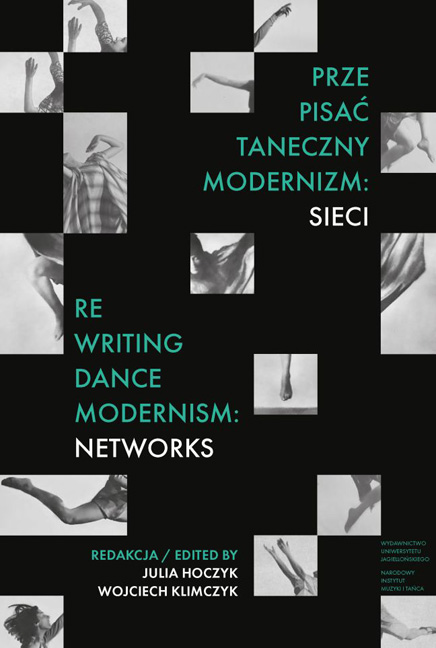Book contents
- Frontmatter
- Contents
- Prze-pisać taneczny modernizm: sieci
- Metodologie: usieciowianie tanecznego modernizmu
- Transmisje: transnarodowe trajektorie tanecznego modernizmu
- Poszerzenia: taneczny modernizm w słowiańskiej Europie Środkowej
- Methodologies: Networking Dance Modernism
- Transmissions: Transnational Trajectories of Dance Modernism
- Expansions: Dance Modernism in Slavic Central Europe
- Biogramy autorów
- Authors’ Biographies
- Indeks / Index
- Miscellaneous Endmatter
- Miscellaneous Endmatter
Sada Yakko: Reconstruction in Action
Published online by Cambridge University Press: 01 March 2024
- Frontmatter
- Contents
- Prze-pisać taneczny modernizm: sieci
- Metodologie: usieciowianie tanecznego modernizmu
- Transmisje: transnarodowe trajektorie tanecznego modernizmu
- Poszerzenia: taneczny modernizm w słowiańskiej Europie Środkowej
- Methodologies: Networking Dance Modernism
- Transmissions: Transnational Trajectories of Dance Modernism
- Expansions: Dance Modernism in Slavic Central Europe
- Biogramy autorów
- Authors’ Biographies
- Indeks / Index
- Miscellaneous Endmatter
- Miscellaneous Endmatter
Summary
Paris, 1900
The 1900 World Exhibition heralded the coming of a new century. Among the nearly fifty million visitors enraptured by the latest technological achievements, wonders of modern architecture, and colonial curiosities brought in to Paris from the furthermost corners of the globe, were three women that were due to leave their mark on the Western performing arts. Dubbed the mothers of modern dance, Loie Fuller, Isadora Duncan and Ruth St. Denis were tied by the shared experience of the Parisian exhibition. One artist in particular made an indelible impression on the three: the Japanese dancer and actress Sada Yakko. Isadora Duncan would later refer to her dance as “[the] one great impression [that] remained with me of the Exhibition of 1900. […] Night after night [I was] thrilled by the wondrous art of this great tragedian.” Recalling the emotions stirred by Sada Yakko's performance, Ruth St. Denis confessed in her autobiography, “For the first time I beheld and understood the beautiful austerities of Japanese art.” And further on: “[It was the] antithesis of the flamboyant, overblown exuberance of American acrobatics.” According to Ruth St. Denis, it was Yakko who taught her to distinguish between the attributes: “astonishing” and “evoking.” Loie Fuller was so moved by Sada Yakko's dance that she resolved to host Yakko's Japanese performances at her theater and organize Sada Yakko's and Kawakami Otojiro's (Yakko's husband) European tour, to which she also invited the young Isadora Duncan.
What was so fascinating in this Japanese artist that so impressed the three great dance reformers? In her book Dancing Women. Female Bodies on Stage, Sally Banes suggests that towards the end of the 19th century “the Modern” was symbolized by the woman, and the revolution of modern dance was founded on the public gesture of the woman who took to the stage not only as a dancer but also as a choreographer. “The first generation of American modern dancers, including Loie Fuller, Isadora Duncan, and Ruth St. Denis, referred to their own type of dancing not as modern but as «aesthetic» or «interpretive.»” And yet they were laying foundations for dance modernism. Can the same be said of Sada Yakko? Would it be justified to refer to her as not only “Europe's first Japanese dancer” but also “Japan's first modern dancer?” Most of all, what may her dance have looked like?
- Type
- Chapter
- Information
- Re-writing Dance Modernism: Networks , pp. 469 - 484Publisher: Jagiellonian University PressPrint publication year: 2023

